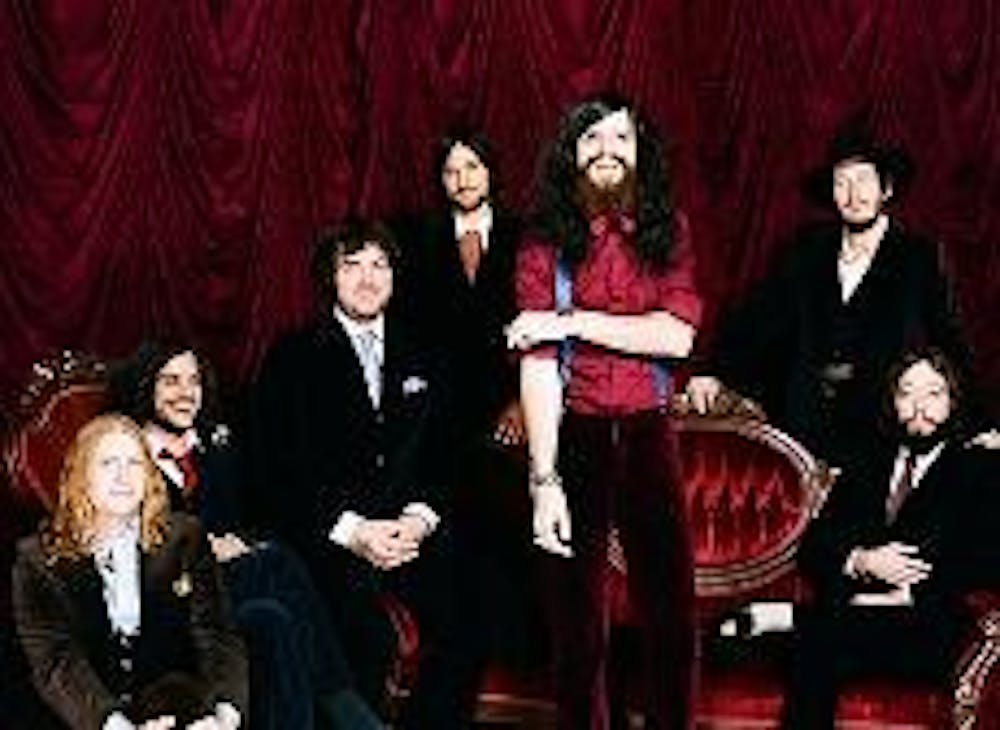Folk music has always stood as the anthem of the working man, whether it be Woody Guthrie singing about striking labor unions or the proud acoustic traditions of South American peasantry. It's a simple enough formula: give a person a guitar or banjo and a lifetime of human experience, and out comes a sound raw with emotion. While often neither technically skilled nor intricate, its affecting messages are both political and personal.
Since its heyday in the 1960s, folk music has splintered, fracturing the archetype of the old flannel-clad folkies and evolving the genre's image. Many modern folk artists point to Nick Drake's "Pink Moon" as one of the definitive albums of the genre, as well as the work of Vashti Bunyan. But the folk movement split into factions, including the New York-centered anti-folk scene and a group of artists playing what was originally known as "freak-folk."
While Devendra Banhart, who many consider to be the central figure of the genre, coined the term "freak-folk," it is only a loose connection of artists, many of whom react with derision to the term. Ed Droste, from the band Grizzly Bear, remarked in an interview with L.A. Weekly that freak-folk comes with an image attached: "You have to have a beard and be Jesusy, if you know what I mean."
Even Banhart himself has urged rejection of the term, considering it an oversimplification by the mainstream music press. He has instead tried to push the term "naturalismo" as a more accurate term for the music they play.
Regardless of what you call it, freak-folk has a distinct feeling that fuses the humble sounds of early folk with the extravagant psychedelic sensibilities of the '60s counterculture. Their lyrics often take fanciful flights into the surreal imaginations of the songwriters, while the music itself is often unplugged, relying on acoustic guitar or other traditional string instruments and driven not by sprawling drum kits but often by bongos or more traditional drums. But who are the people who define this genre? Here are just a few of the most active participants of freak-folk.
VASHTI BUNYAN
In 1970, Vashti Bunyan released "Just Another Diamond Day," one of the most refreshing albums of its day. Robert Kirby (who also worked with Nick Drake) produced the album, which featured songs written while Bunyan traveled on a cross-country journey, recording the stories of the downtrodden citizens she met along the way. And then she dropped off the face of the earth.
It wasn't until 2000 when "Just Another Diamond Day" was re-released that modern folk artists began to lift heavily from the album's psychedelic rhythms and experimental vocals. Since then she has recorded sporadically, acting as a mentor for freak-folk artists as they further their experimental forays. Most of the major artists of the scene have drafted her to record with them and advise them of where to cull the next great innovation in folk music. But even if her greatest musical contribution occurred almost four decades ago, she is still an incredibly influential figure in certain circles.
DEVENDRA BANHART
The most visible figure of the genre today, Banhart immediately garnered critical praise with his lyrically dense albums that seemed to pick up precisely where the ailing folk genre had dropped off. The natural aesthetics of the lyrics are delivered with Banhart's thin, whispery voice, giving the songs a sense of urgency and desperation betrayed by the mellow acoustic pickings that act as the foundation the words build upon.
Banhart has become somewhat of a critical and cultural lightning rod. Like many of his fellow freak-folkers, listeners love him or hate him, think he's overly dramatic or just goofy sounding. He's a touchstone of the New York independent music scene, making his hirsute presence known and acting as a trendsetter for the remains of the folk community. But his music is still the most remarkable aspect of his presence, which has the feeling of private conversations between the singer and his listener.
JOANNA NEWSOM
The thing that catapults Newsom to the forefront of her genre is her voice. Like an overexcited child who just took a hit of helium out of her birthday balloons, Newsom sings at a pitch that was once thought to only be possible if one was a eunuch. Running her fingers over a full sized harp, Newsom spins fanciful stories about sailors and summer breezes, her voice cracking at intervals as she strains to widen her range.
First-timer listeners will probably laugh: she doesn't sound, well, good. But Newsom's music is strangely addictive. Once the listener gets over the ear assault, it's surprisingly easy to get whisked away into the fantasy world she creates, floating softly on the harp strings' sweet melodies while Newsom sings about sea monsters, and even the most attentive listener can't help but begin to ignore its flaws and enjoy something so genuine.
You can reach this staff writer at mrichardson@theeagleonline.com.





